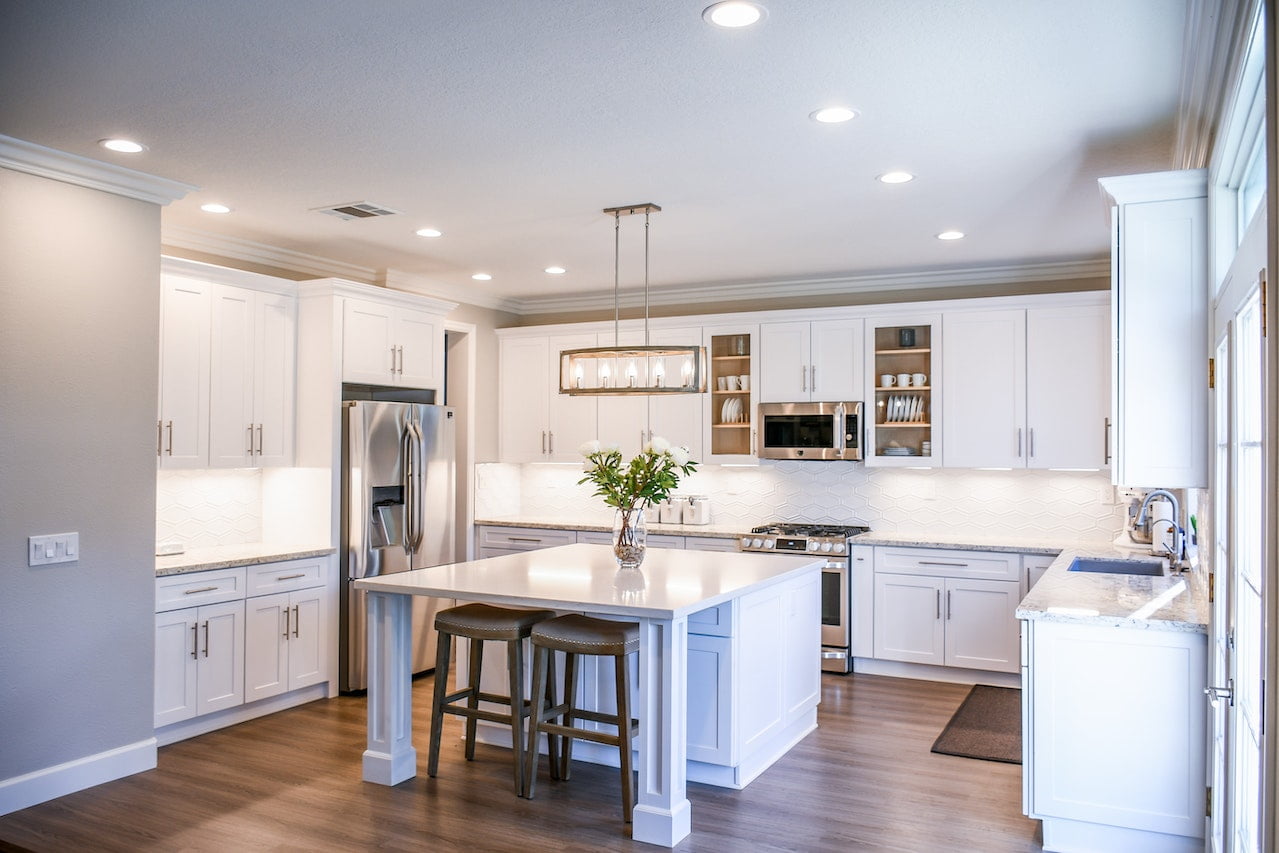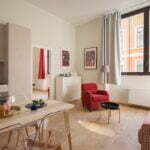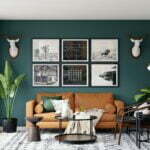Few things can set the mood for cooking and entertaining quite like proper lighting in the kitchen. From enhancing functionality to creating ambience, choosing the right light fixtures can transform your culinary space into a welcoming haven. But with so many lighting options available, how do you know where to start? If you’re looking to light up your kitchen with style and efficiency, look no further than this blog post. Whether you are building from scratch or refreshing an existing space, we’ve got some expert tips and tricks that will help illuminate your way to a perfectly lit kitchen that suits both your needs and style!
Understanding the Types of Kitchen Lighting
Lighting is one of the most important aspects of any room in your house, but it is often overlooked when it comes to the kitchen. The right lighting can make a big difference in both the look and feel of your kitchen. There are three main types of lighting that you should consider for your kitchen: ambient, task, and accent.
Ambient lighting is general or overall lighting that illuminates a room. It can be provided by overhead fixtures, recessed lights, track lights, or wall sconces. Task lighting is designed to provide light for specific tasks such as cooking or food preparation. It should be bright enough to allow you to see clearly, but not so bright that it causes glare. Accent lighting is used to highlight certain features of the room or to create a certain mood. It can be achieved with spotlights, track lights, pendant lights, or under-cabinet lighting.
When choosing kitchen lighting, you need to take into account the size and layout of your kitchen as well as what kind of activities will take place there. If you have a small kitchen, you will want to choose light fixtures that don’t take up a lot of space. If you do a lot of cooking and food preparation in your kitchen, task lighting will be very important. And if you entertain often, then accent lighting can help create a warm and inviting atmosphere.
The best way to decide which type of lighting is right for your kitchen is to consult with an experienced lighting designer. They can help you determine the best type of lighting for your specific needs.

Pros and Cons of Different Types of Lighting
There are many different types of lighting available on the market today and each has its own advantages and disadvantages. The type of lighting you choose for your kitchen will depend on your individual needs and preferences. Here is a look at some of the most popular types of lighting:
Incandescent Lighting:
Advantages – Incandescent bulbs are inexpensive and widely available. They also provide good general lighting.
Disadvantages – Incandescent bulbs produce a lot of heat, which can make them uncomfortable to use in warm kitchens. They also tend to flicker and buzz, which can be annoying.
Fluorescent Lighting:
Advantages – Fluorescent bulbs are very efficient, so they can help to reduce energy costs. They also produce little heat, so they are comfortable to use in warm kitchens.
Disadvantages – Some people find that fluorescent bulbs give off a harsh light that is difficult to work under. They can also flicker and buzz, which can be annoying.

Planning Your Kitchen Layout for Optimal Lighting
There’s nothing worse than a poorly lit kitchen. Not only is it uninviting and unappealing, but it can also make it difficult to see what you’re doing when cooking or preparing food. Fortunately, there are a few things you can do to ensure your kitchen is optimally lit.
First, consider the layout of your kitchen. Where are the windows? Where are the doors? What is the overall shape of the room? Once you have a good understanding of the layout, you can start planning where to place your lighting fixtures.
If possible, try to position your light fixtures near windows. This will allow natural light to flood the room, making it brighter and more inviting. If there aren’t any windows in your kitchen, or if they’re not positioned in a way that allows for much natural light, then you’ll need to rely on artificial lighting.
In terms of artificial lighting, there are a few different options to choose from. Incandescent bulbs are relatively inexpensive and provide warm, inviting light. However, they don’t last as long as other types of bulbs and can produce a lot of heat.
Fluorescent lights are more energy-efficient than incandescent bulbs and last longer, but they can often give off a harsh, clinical light. LEDs are the most energy-efficient option and their light is very close to natural sunlight, but they can be more expensive up front.
Once you’ve selected the type of lighting you’d like to use, it’s time to decide the best placement for each fixture. You’ll want to place ceiling fixtures near the centre of the kitchen and wall fixtures around the edges or near areas where food is being prepared or cooked.
You should also consider adding task lighting over any major work surfaces, such as a kitchen island. This will ensure that you have plenty of light while you’re working and help reduce eye strain.
Finally, don’t forget to add some accent lighting as well. Place lights over artwork or in cabinets that display your favourite dishes to add a little ambience and charm to the room.
By considering your kitchen layout and taking the time to think about which types of lights you’d like to use, you can create a beautiful and inviting space that is optimally lit for any activity.

Best Practices for Installing Your Kitchen Lights
There are a few things to keep in mind when selecting and installing your kitchen lights. First, consider the size and layout of your kitchen. You’ll want to make sure you have adequate lighting in each area, including task lighting over the stove and sink. Second, think about the type of light you want to create. Do you want a warm and inviting space or a bright and cheery one? Third, choose energy-efficient bulbs to save money on your electric bill. Take into account the style of your kitchen when choosing fixtures. Whether you prefer modern or traditional, there are plenty of options to choose from.

Tips for Selecting Kitchen Lighting Fixtures
There are a few things to consider when selecting kitchen lighting fixtures. First, decide what type of light you need. There are three main types of light: task, accent, and ambient. Task lighting is used for specific tasks like cooking or cleaning. It is usually brighter and more focused in one area. Accent lighting is used to highlight certain features in the kitchen like artwork or cabinets. Ambient lighting is general lighting that fills the whole space. It is often softer and less intense than other types of light.
Once you know what type of light you need, select a fixture that will provide that type of light. There are many different types of fixtures available, so do some research to find one that will work best for your kitchen. Consider the size of the space and the height of the ceilings when choosing a fixture. You also want to make sure the fixture will be compatible with any existing electrical outlets in the kitchen.
Think about the style of the fixtures. There are many different styles available, so choose one that fits with the overall décor of your kitchen

DIY Ideas and Projects to Increase Lighting in Your Kitchen
When it comes to lighting your kitchen, there are a few things to keep in mind. The first is that you want to make sure the light is evenly distributed throughout the room. This can be achieved by using a variety of lighting fixtures such as recessed lighting, pendant lights, and under-cabinet lights.
Another thing to consider is the type of lightbulbs you use. For example, LED bulbs are a great option for under-cabinet lights because they emit very little heat and are very energy-efficient.
Don’t forget about task lighting! This is especially important if you have a kitchen island or breakfast nook where you’ll be preparing meals. Task lighting should be bright enough to illuminate your work surface without being so harsh that it’s uncomfortable to look at.
Now that you know a few things about kitchen lighting, it’s time to get started on your own project! Here are a few DIY ideas and projects to help increase the lighting in your kitchen:
1. Add some under-cabinet lights – This is a quick and easy way to add extra light to your workspace. You can find LED strips online or at your local hardware store. Just stick them underneath your cabinets and plug them in!
2. Swap out old light bulbs – If your kitchen still has old incandescent bulbs, now is the time to upgrade to LEDs. You

Examples of Greatly Illuminated Kitchens
1. Hang a large, ornate chandelier over your kitchen island for a dramatic focal point. Be sure to select a style that compliments the overall design of your kitchen.
2. Use track lighting to highlight certain areas of your kitchen, such as the backsplash or an art piece. This type of lighting is also great for task lighting, such as when you’re cooking at the stove.
3. Install under-cabinet lighting to brighten up countertops and provide extra light for food preparation. This is especially helpful in dark kitchens or if you have cabinets with glass doors.
4. Add sconces or pendant lights above your kitchen sink for additional task lighting. These lights can also be used to create a cohesive look throughout your kitchen by matching their style to your other light fixtures.
5. Place floor lamps in corners or near seating areas to create a warm and inviting ambience in your kitchen. Floor lamps are also great for highlighting specific areas, such as a breakfast nook or cozy sitting area

Conclusion
With the right combination of lamps and fixtures, you can easily and affordably light up your kitchen and create a beautiful ambience. We hope our tips have given you some insight into choosing the best lighting for any style, budget, or space. If you need help finding the perfect pieces to finish off your kitchen, check out our selection of lighting fixtures and find something that suits your tastes. How will you be adding extra illumination to brighten your cooking space? Let us know in the comments below!
This post contains affiliate links. When you buy through links on our site, we may earn an affiliate commission. Read the full disclosure here.







